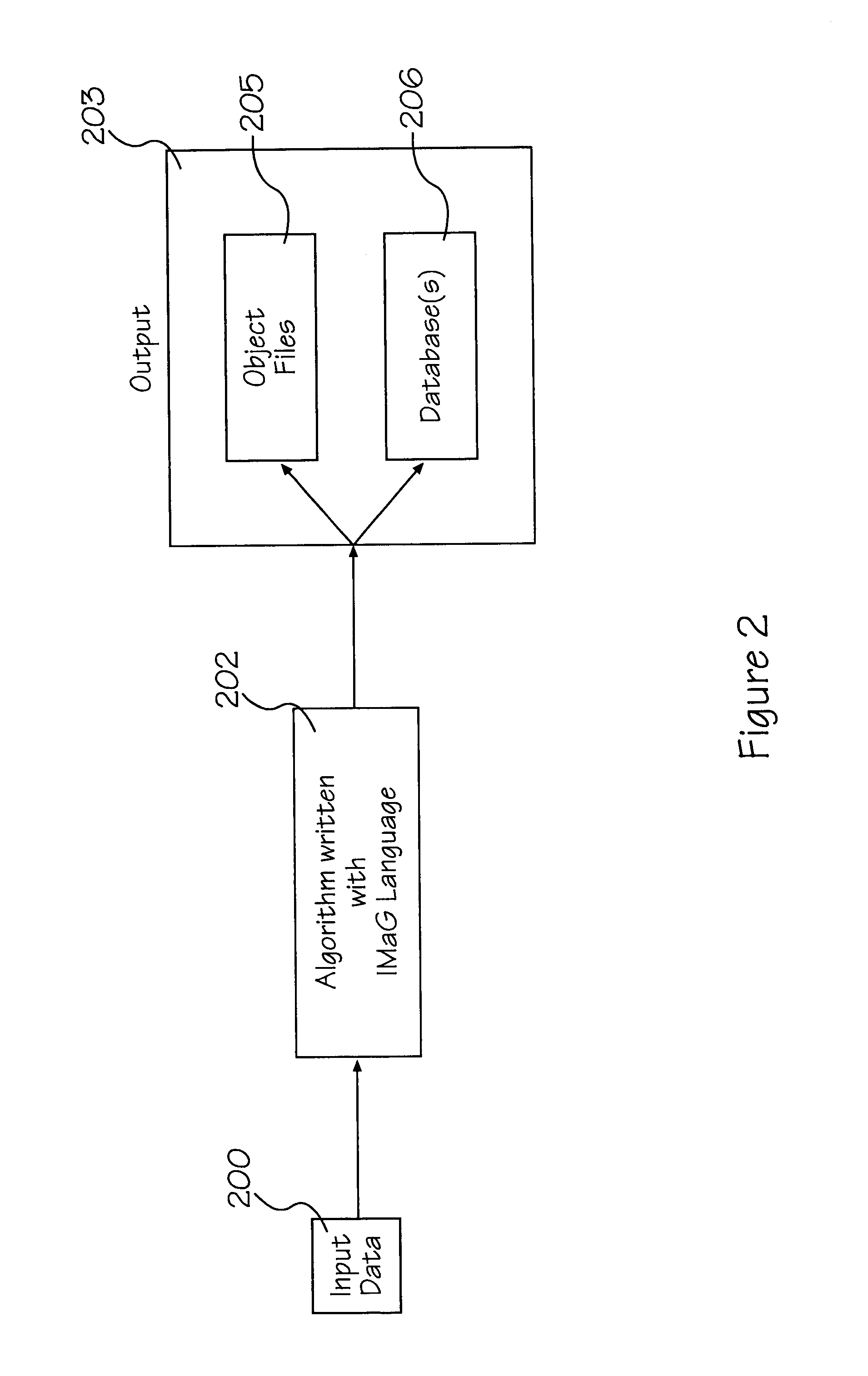System for guiding users to formulate and use object extraction rules
a technology of object extraction and user guide, applied in the field of object recognition, can solve the problems of lack of user problem solving ability, high price of developing and coding a solution algorithm, and no one could be understood by the average user,
- Summary
- Abstract
- Description
- Claims
- Application Information
AI Technical Summary
Benefits of technology
Problems solved by technology
Method used
Image
Examples
Embodiment Construction
[0065]Generally speaking, the invention features a system, in the field of photo-interpretation, for example, in which students are taught or trained to extract an object from an image by using the Tone principle, the Texture principle, the Size principle, the Shape principle, the Shadow principle, the Pattern principle, the Associated Feature principle, and the Stereo Scopic characteristics principle. In addition, once such a training process is accomplished, the system becomes an automatic, interactive object recognition system.
[0066]The method the invention is intended to train a user to become an expert by querying a computer system. In the case herein presented for purposes of illustration, the user becomes an expert in identifying an object in an image. It should be understood, however, that, many other fields of endeavor can exploit the teachings of this invention, as will be apparent to those skilled in the various and germane arts.
[0067]The computer system of the present in...
PUM
 Login to View More
Login to View More Abstract
Description
Claims
Application Information
 Login to View More
Login to View More - R&D
- Intellectual Property
- Life Sciences
- Materials
- Tech Scout
- Unparalleled Data Quality
- Higher Quality Content
- 60% Fewer Hallucinations
Browse by: Latest US Patents, China's latest patents, Technical Efficacy Thesaurus, Application Domain, Technology Topic, Popular Technical Reports.
© 2025 PatSnap. All rights reserved.Legal|Privacy policy|Modern Slavery Act Transparency Statement|Sitemap|About US| Contact US: help@patsnap.com



